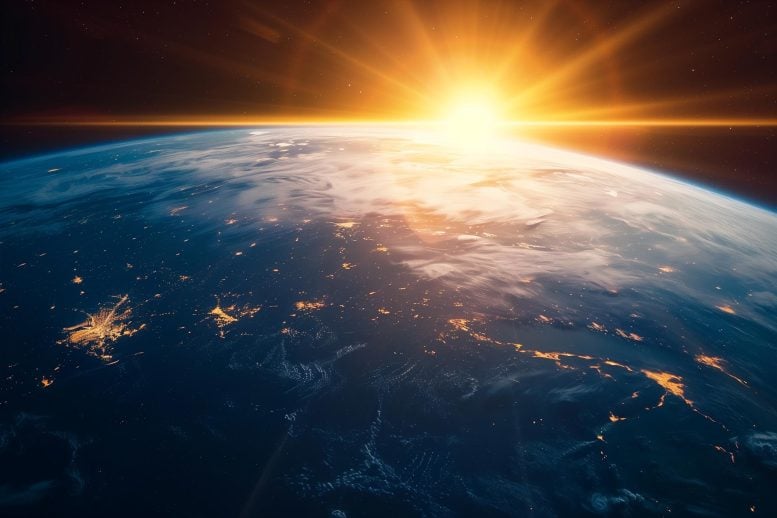
A study has revealed how massive wildfires influence the ozone layer by introducing large amounts of aerosols into the stratosphere. These aerosols trigger complex chemical reactions, paradoxically causing both depletion and increase of ozone in different stratospheric layers, highlighting the importance of continued research as climate change progresses. Credit: SciTechDaily.com
Research reveals that wildfires can significantly affect the stratosphere’s ozone layer by injecting aerosols that alter ozone levels through complex reactions, underlining the necessity for ongoing vigilance in climate change research.
In a revelation that highlights the fragile balance of our planet’s atmosphere, scientists from China, Germany, and the USA have uncovered an unexpected link between massive wildfire events and the chemistry of the ozone layer. Published today (July 12) in the journal Science Advances, this study reveals how wildfires, such as the catastrophic 2019/20 Australian bushfires, impact the stratosphere in previously unseen ways.
Ozone Layer Recovery and Challenges
The ozone layer, a crucial shield protecting life on Earth from harmful ultraviolet (UV) radiation, has been on a path to recovery thanks to the Montreal Protocol. This landmark international treaty, adopted in 1987, successfully phased out the production of numerous substances responsible for ozone depletion. Over the past decades, the ozone layer has shown significant signs of healing, a testament to global cooperation and environmental policy.
However, the stability of this vital atmospheric layer is now facing a new and unexpected challenge. During the 2019/20 Australian wildfires, researchers observed a dramatic increase in stratospheric aerosols – tiny particles that can influence climate, health, and atmospheric chemistry.
Novel Insights From Wildfire Research
Utilizing advanced satellite data and numerical models, the research team successfully demonstrated the impact of wildfires through a novel phenomenon: the smoke-charged vortex (SCV).
“The SCV is a powerful, smoke-laden whirlpool that transports wildfire emissions into the stratosphere, reaching altitudes of up to 35 kilometers,” explained Prof. Hang Su from the Institute of Atmospheric Physics at the Chinese Academy of Sciences, one of the corresponding authors of the study. “This process led to at least a doubling of the aerosol burden in the southern hemisphere’s middle stratosphere. These aerosols, once reaching such high altitudes, initiated a series of heterogeneous reactions that impacted ozone concentrations.”
Implications of Wildfire-Induced Ozone Dynamics
The international team discovered that these wildfire-induced aerosols facilitated heterogeneous chemical reactions, which paradoxically led to both ozone depletion and ozone increase at different atmospheric layers.
While the lower stratosphere experienced significant ozone loss, they found that the enhanced chemical reactions on aerosols at higher altitudes, i.e., the middle stratosphere, lead to increase of ozone. In Southern Mid-Latitudes, this complex interplay managed to buffer approximately 40% (up to 70%) of the ozone depletion observed in the lower stratosphere in the following months of the mega-bushfire events.
Urgency for Ongoing Research
So why does this matter?
“Our study demonstrates an unexpected and crucial mechanism, by which the absorbing aerosols in wildfire smoke, such as black carbon, can induce and sustain enormous smoke-charged vortices spanning thousands of kilometers. These vortices can persist for months, carrying aerosols deeply into the stratosphere and affecting the ozone layer in distinct ways at different altitudes. This highlights the need for continued vigilance and research as climate change progresses,” said Prof. Yafang Cheng, another corresponding author from the Max Planck Institute for Chemistry.
Future Directions in Climate Change and Ozone Research
The ozone layer’s role in filtering UV radiation is crucial for protecting all life forms on Earth. The Montreal Protocol’s success in reducing ozone-depleting substances was a monumental achievement, but the new findings highlight that natural events, exacerbated by climate change, pose additional risks to this fragile layer. With the increasing frequency and intensity of wildfires driven by global warming, the formation of SCVs and their impact on the stratosphere could become more common, threatening the delicate balance of the ozone layer.
As we continue to grapple with climate change, understanding these newly discovered atmospheric processes is vital. This study opens new avenues for research into how wildfire and other climate-driven events might influence stratospheric chemistry and ozone dynamics in the future.
Reference: “Smoke-charged vortex doubles hemispheric aerosol in the middle stratosphere and buffers ozone depletion” by Chaoqun Ma, Hang Su, Jos Lelieveld, William Randel, Pengfei Yu, Meinrat O. Andreae and Yafang Cheng, 12 July 2024, Science Advances.
DOI: 10.1126/sciadv.adn3657


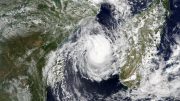


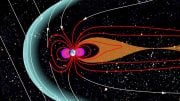
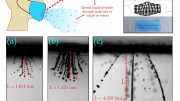
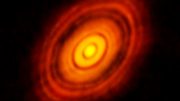
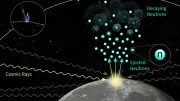
“…, the ozone layer has shown significant signs of healing, …”
My definition of “significant” is apparently different from that of whoever wrote this article. If one looks at the graphs created by NASA ( https://ozonewatch.gsfc.nasa.gov/ ), the last few years are not what I would call significantly different from what the situations was with the Antarctic ‘Ozone Hole’ in the 1990s. One sometimes sees what they want to see, as in an inkblot. Look for yourself.
However, what is really important is the UV flux at ground level. Ask yourself, “When was the last time you saw a map or even a graph of the daily UV flux anywhere on Earth for a year, let alone in Antarctica since the Montreal Protocol?” Why hasn’t that been presented? Why only spotty data for a proxy for UV?
Thousands of Air Force tankers could be used for water drops within ascribed perimeters to protect wildlife and rural communities, and supress smoke. Forrestry Service uses existing methods of controlled burns as a means of preserving fat budgets.
There is a Catch 22 situation. One of the reasons that fires have been so severe recently is because of decades of fire suppression, allowing fuel to build up.
I’m afraid that Canada might not welcome “Thousands of Air Force tankers” flying over their country. I’m sure that Russia would be absolutely paranoid over “Thousands of Air Force tankers” flying over Siberia. A problem with your suggestion is that there are many trees that need fire to germinate. More effective fire suppression not only allows fuel to continue to accumulate, but it would not allow new trees to grow.
What do you consider to be a “fat budget,” and what is the Forest Service’s annual budget?